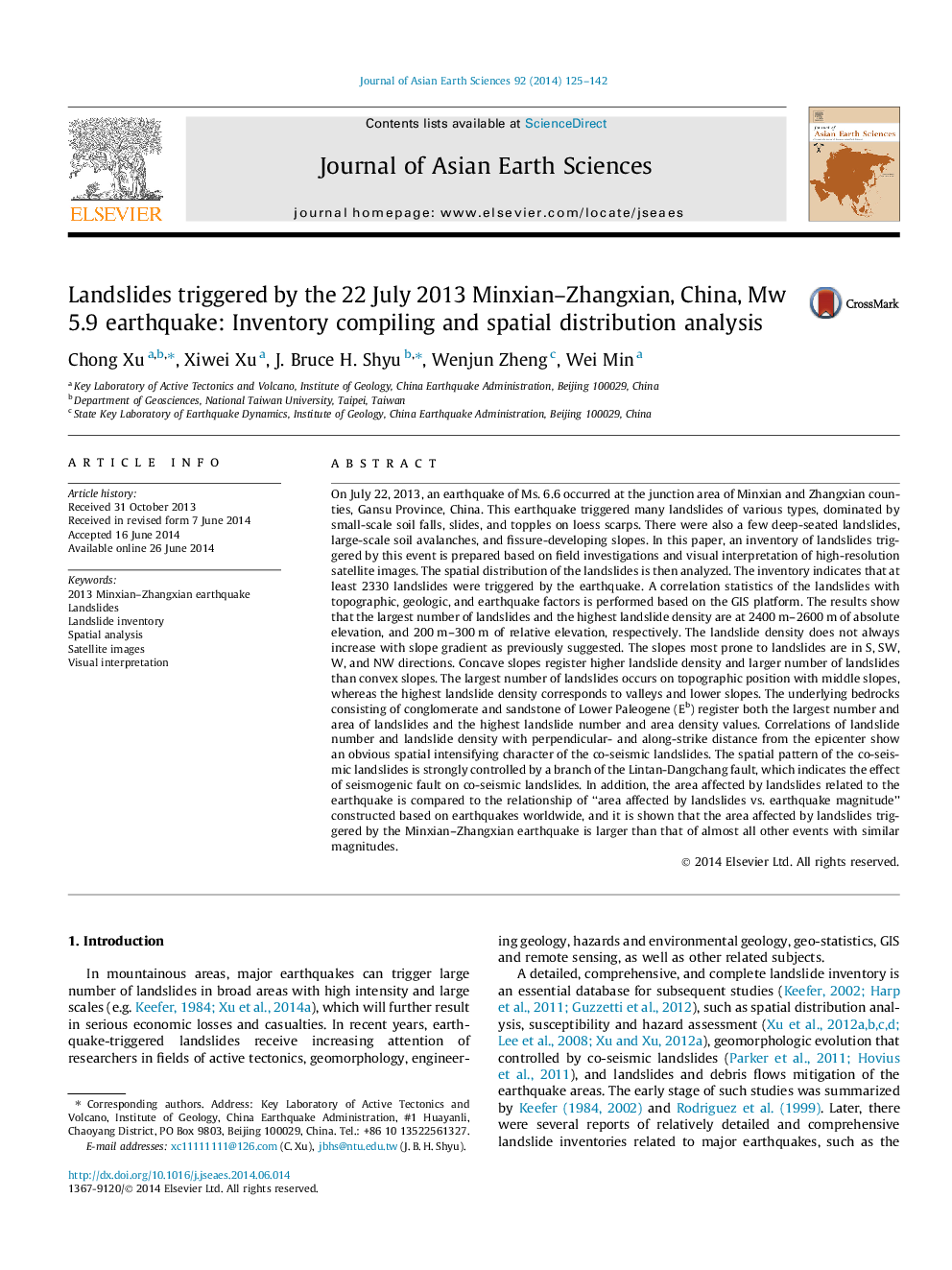| Article ID | Journal | Published Year | Pages | File Type |
|---|---|---|---|---|
| 4730524 | Journal of Asian Earth Sciences | 2014 | 18 Pages |
•We located 2330 landslides triggered by the Minxian–Zhangxian earthquake.•Most of the landslides are small-scale falls, slides, and topples on loess scarps.•The landslides were correlated with topographic, lithology, and seismic parameters.•The spatial distribution of the landslides may controlled by a branch of the LD fault.
On July 22, 2013, an earthquake of Ms. 6.6 occurred at the junction area of Minxian and Zhangxian counties, Gansu Province, China. This earthquake triggered many landslides of various types, dominated by small-scale soil falls, slides, and topples on loess scarps. There were also a few deep-seated landslides, large-scale soil avalanches, and fissure-developing slopes. In this paper, an inventory of landslides triggered by this event is prepared based on field investigations and visual interpretation of high-resolution satellite images. The spatial distribution of the landslides is then analyzed. The inventory indicates that at least 2330 landslides were triggered by the earthquake. A correlation statistics of the landslides with topographic, geologic, and earthquake factors is performed based on the GIS platform. The results show that the largest number of landslides and the highest landslide density are at 2400 m–2600 m of absolute elevation, and 200 m–300 m of relative elevation, respectively. The landslide density does not always increase with slope gradient as previously suggested. The slopes most prone to landslides are in S, SW, W, and NW directions. Concave slopes register higher landslide density and larger number of landslides than convex slopes. The largest number of landslides occurs on topographic position with middle slopes, whereas the highest landslide density corresponds to valleys and lower slopes. The underlying bedrocks consisting of conglomerate and sandstone of Lower Paleogene (Eb) register both the largest number and area of landslides and the highest landslide number and area density values. Correlations of landslide number and landslide density with perpendicular- and along-strike distance from the epicenter show an obvious spatial intensifying character of the co-seismic landslides. The spatial pattern of the co-seismic landslides is strongly controlled by a branch of the Lintan-Dangchang fault, which indicates the effect of seismogenic fault on co-seismic landslides. In addition, the area affected by landslides related to the earthquake is compared to the relationship of “area affected by landslides vs. earthquake magnitude” constructed based on earthquakes worldwide, and it is shown that the area affected by landslides triggered by the Minxian–Zhangxian earthquake is larger than that of almost all other events with similar magnitudes.
